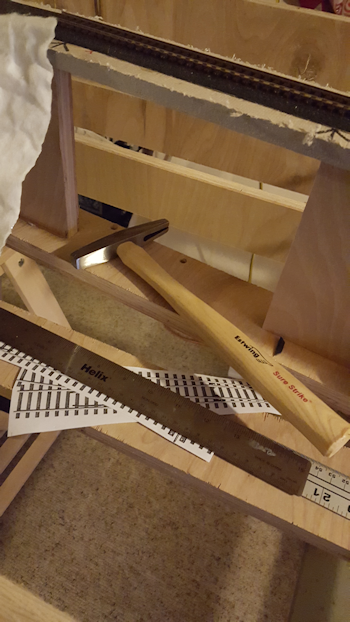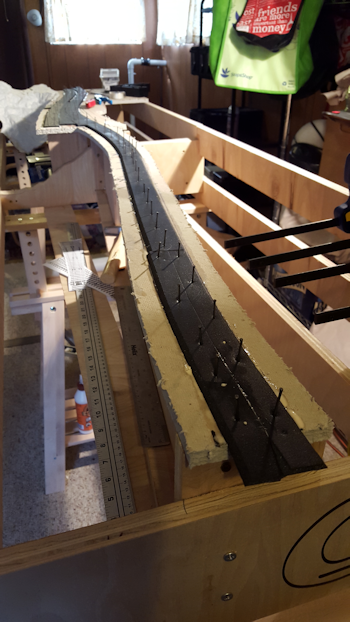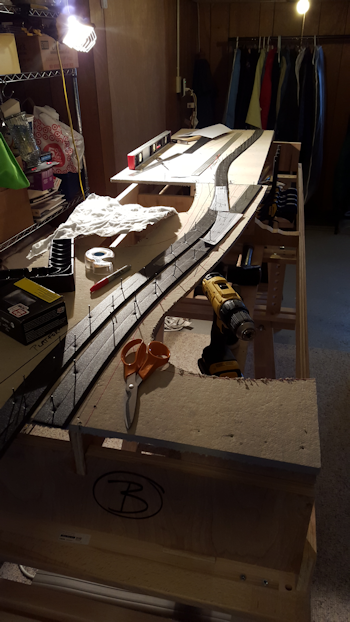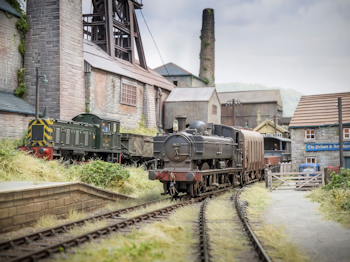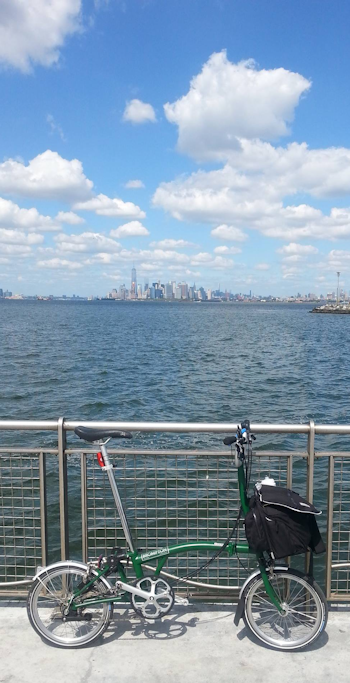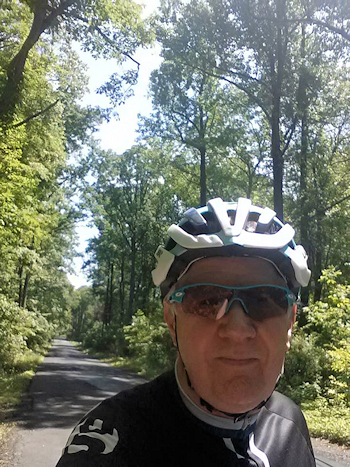Well, as friends will know, Mrs Bloke and I have completed the move from @HillAcres to @ChezNousSurMer. Not as traumatic as it could have been, but a couple of weeks later we are still surrounded by boxes.
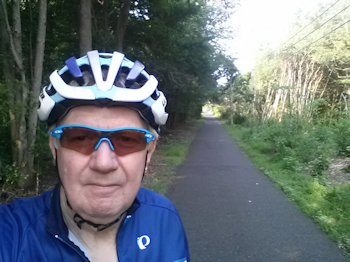
Me on the trail. Looks nice doesn’t it? Not me, obviously
So, having ridden a couple of forays into the neighbourhood it was time to tackle something a little more serious and since I haven’t really been able to plot a nice way into the countryside or find a nice place from which to start a ride I decided to try out the Henry Hudson Bike Trail which passes within a couple of miles of our front door.
The Henry Hudson Bike Trail is, potentially, a great amenity and should be a magnet for bicycle riders of all ages and abilities. Unfortunately, as I rode it, it became apparent that parts of it have become sadly neglected and virtually nothing has been done to enhance its value as a community and tourist facility.
I joined the trail in Keyport. That was not as easy as you might think since there were no indicators until you are on top of the trail entry points. In a couple of places, where the trail crosses local roads, cars were allowed to park right up to, and even obstruct the crossings making it difficult to check the roads even when doing the right thing, ie; stopping and looking. It’s quite hard to safely look around some giant truck when you’re on a bike.
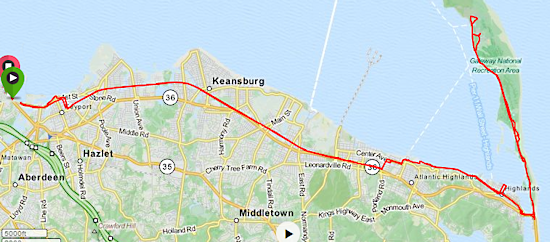
My route from Keyport to Sandy Hook along the Henry Hudson Bike Trail.
The surface of the trail at this point, and in fact right up to Atlantic Highlands is blacktop. The condition is generally okay, but at several points there are sharp ridges, maybe up to 4″ high in some cases, caused by expansion or tree roots perhaps, which are unpleasant, even dangerous, at recreational trail speed.
Add to that sunken drains and sometimes severe transitions – 3″-4″ ridges and steps – onto bridges and you have a number of issues on what should be a safe and secure trail.
As you approach Atlantic Highlands the trail crosses some fairly major roads at light controlled junctions. Well, lights aimed at traffic on the roads, that is. There is no bike detection or request button at these points and you have to wait for the sequence to take its course and hope you don’t get hit by a right hooker while the indicator says it’s safe to cross.
The trail takes a break as it enters the outskirts of Atlantic Highlands. A small sign indicates you should turn left onto a series of neighbourhood roads, but then you have to be extremely sharp-eyed to spot the signs which will take you to the point where the trail resumes. I spoke to two or three lost cyclists at this point.
The trail cuts through a large parking lot down by the harbour then threads its way eastwards again, still on blacktop. However, as the trail leaves the harbour area it has a zone which looks as if it was washed out by Sandy. For a hundred yards or so the surface looks like a wilderness mountain bike trail before re-establishing itself with a surface of, what to my UK eyes is, a dressing of 3/4″ to dust limestone gravel.
Generally, limestone chippings aren’t an issue for a bike trail. I remember when the Bristol-Bath trail, an early UK bike trail, was surfaced with this stuff. After being in use for a couple of weeks it was perfectly adequate, even for a road bike, but in this section there are a lot of washouts with channels several inches deep and a foot across. In some points the trail becomes a boardwalk with longitudinal planks and gaps easily capable of grabbing a 25mm wheel with (almost) inevitable results.
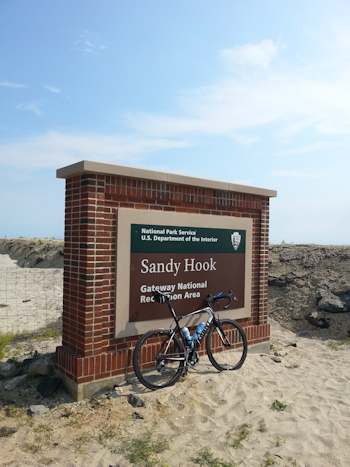
The mighty Giant Defy SL Advanced cools its heels at Sandy Hook
Now, I know it’s possible to ride any bike anywhere you like. Most of my friends and acquaintances would have no trouble riding the route on a full-on road bike. I was riding the mighty Defy, but it was a challenge. When I ride this trail again, and I will, it will be on something with a 32+mm tyre. A ‘cross bike or gravel racer would be fine. A hybrid, perfect. A cruiser, even. But not my pride and joy.
This bike trail is a community amenity and should be accessible by anyone, especially those without advanced trail skills. You know; children, occasional recreational riders, retirement community members … me.
Sorry to appear so negative, and I’m not really, but to me it seems that this is NJ and bicycles problem in a nutshell.
Just say, “We have Complete Streets.”
Just say, “We have a bike trail.”
But it doesn’t actually mean we have any of those things if you don’t value and maintain them.
Bike trails just don’t need to be designed or legislated. They need upkeep, maintenance and development. Constant innovation. There’s a mountain to climb. It’s kind of like “Complete Streets”. You said you liked the idea, and that’s enough. Job done!

Sandy Hook Light – I made it despite it all!
Well, it’s not.
I hark back to the Bristol-Bath bike path. It has sculpture trails, blue plaques, historic notes, local signposts and access to pubs, cafes, shops, transport nodes, toilets, children’s playgrounds, etc, which let you know where you are, how far the next village is, and so on. In fact, if you want you can ride on to Moscow, Athens or the Arctic Circle, all on a maintained, protected and indicated cycle path.
The US can do this. Look at The High Line – okay, it’s for walkers only, the NYC Greenway … it can be done.
Don’t get me wrong. The Henry Hudson Bike Trail is a great facility. But it needs development, maintenance and connection to the communities it passes through.





